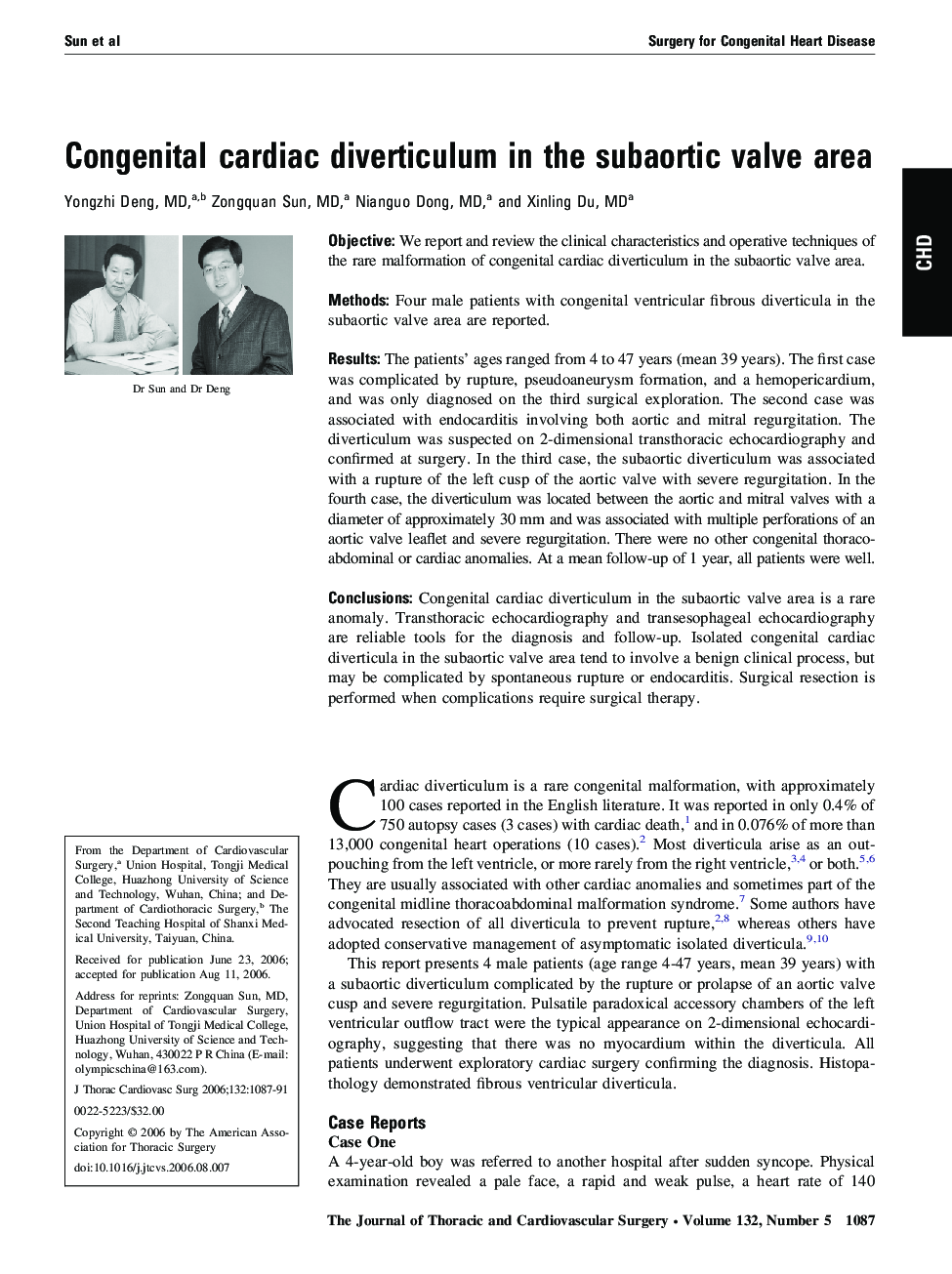| Article ID | Journal | Published Year | Pages | File Type |
|---|---|---|---|---|
| 2986440 | The Journal of Thoracic and Cardiovascular Surgery | 2006 | 5 Pages |
ObjectiveWe report and review the clinical characteristics and operative techniques of the rare malformation of congenital cardiac diverticulum in the subaortic valve area.MethodsFour male patients with congenital ventricular fibrous diverticula in the subaortic valve area are reported.ResultsThe patients’ ages ranged from 4 to 47 years (mean 39 years). The first case was complicated by rupture, pseudoaneurysm formation, and a hemopericardium, and was only diagnosed on the third surgical exploration. The second case was associated with endocarditis involving both aortic and mitral regurgitation. The diverticulum was suspected on 2-dimensional transthoracic echocardiography and confirmed at surgery. In the third case, the subaortic diverticulum was associated with a rupture of the left cusp of the aortic valve with severe regurgitation. In the fourth case, the diverticulum was located between the aortic and mitral valves with a diameter of approximately 30 mm and was associated with multiple perforations of an aortic valve leaflet and severe regurgitation. There were no other congenital thoracoabdominal or cardiac anomalies. At a mean follow-up of 1 year, all patients were well.ConclusionsCongenital cardiac diverticulum in the subaortic valve area is a rare anomaly. Transthoracic echocardiography and transesophageal echocardiography are reliable tools for the diagnosis and follow-up. Isolated congenital cardiac diverticula in the subaortic valve area tend to involve a benign clinical process, but may be complicated by spontaneous rupture or endocarditis. Surgical resection is performed when complications require surgical therapy.
